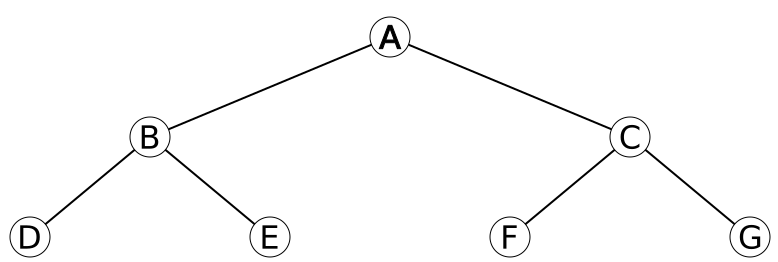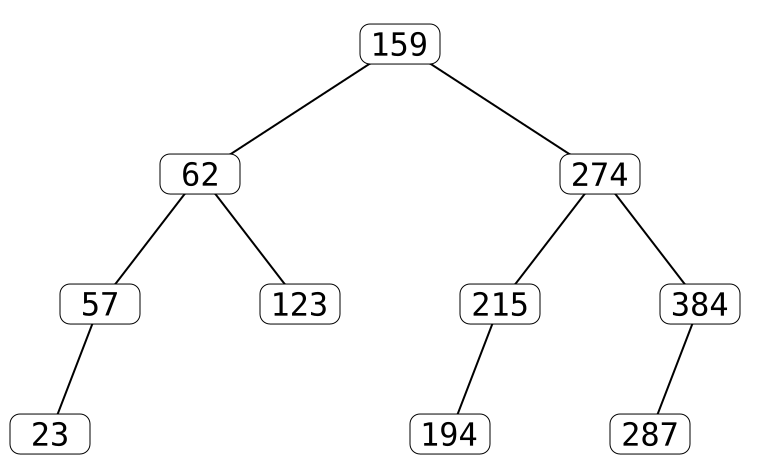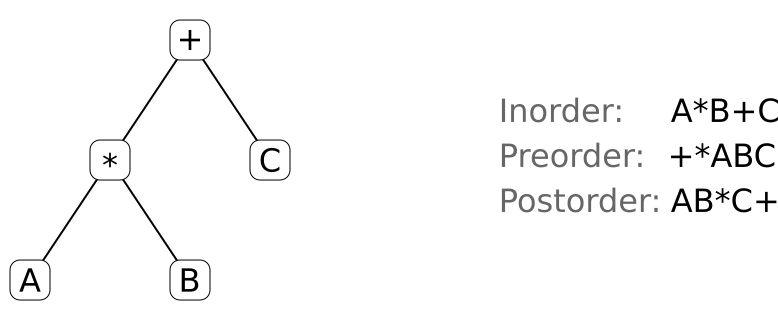Binary Trees
A binary tree is a set of nodes linked into a simple structure. Every node has at most two children.
- Each node has data, a left pointer and a right pointer.
- Each pointer can point to one other node (or be NULL).

Nomenclature
- A node is the parent of any node to which it pointer.
- A node is the child of any node that points to it.
- A node can be a child and a parent.
- A node is the root of the tree if it has no parent.
- A node is a leaf is it has no children.

Searching
23 57 62 123 159 194 215 274 287 384
In code (Binary Search)
struct node {
node *left;
node *right;
int data;
};
node *
treesearch (node *n, int *k) {
if (NULL = n) {
return NULL;
}
else if (k == n.data) {
return n;
}
else if (k < n.data) {
return treesearch (node->left, k)
}
else {
return treesearch (node->right, k)
}
}Tree Traversal
Depth first (inorder or infix):
- left subtree.
- root.
- right subtree.
Depth first (preorder or prefix):
- root.
- left subtree.
- right subtree.
Depth first (postorder or postfix):
- left subtree.
- right subtree.
- root.
Breath first:
- all roots at each level in turn.
- to do efficiently needs the right representation.
Direction of Traversal
All traversals can be right to left instead.
- R->L inorder is the inverse of L->R inorder.
- R->L preorder is the inverse of L->R postorder.
- R->L postorder is the inverse of L->R preorder.
